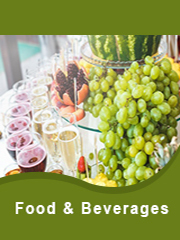Report overview
Apart from food sources, isoflavones may also be purchased in purified form, often isolated and extracted from soy or red clover. In supplements, soy isoflavones are normally found as isoflavone glycosides.
This report aims to provide a comprehensive presentation of the global market for Food Grade Isoflavones, with both quantitative and qualitative analysis, to help readers develop business/growth strategies, assess the market competitive situation, analyze their position in the current marketplace, and make informed business decisions regarding Food Grade Isoflavones. This report contains market size and forecasts of Food Grade Isoflavones in global, including the following market information:
Global Food Grade Isoflavones Market Revenue, 2018-2023, 2024-2029, ($ millions)
Global Food Grade Isoflavones Market Sales, 2018-2023, 2024-2029, (K MT)
Global top five Food Grade Isoflavones companies in 2022 (%)
The global Food Grade Isoflavones market was valued at US$ million in 2022 and is projected to reach US$ million by 2029, at a CAGR of % during the forecast period. The influence of COVID-19 and the Russia-Ukraine War were considered while estimating market sizes.
The U.S. Market is Estimated at $ Million in 2022, While China is Forecast to Reach $ Million.
Purity 40% Segment to Reach $ Million by 2029, with a % CAGR in next six years.
The global key manufacturers of Food Grade Isoflavones include Archer Daniels Midland, Future Ceuticals, Frutarom Health, Fujicco, Herbo Nutra, Solbar Industries and Bio-Gen Extracts, etc. in 2022, the global top five players have a share approximately % in terms of revenue.
We surveyed the Food Grade Isoflavones manufacturers, suppliers, distributors and industry experts on this industry, involving the sales, revenue, demand, price change, product type, recent development and plan, industry trends, drivers, challenges, obstacles, and potential risks.
Total Market by Segment:
Global Food Grade Isoflavones Market, by Type, 2018-2023, 2024-2029 ($ Millions) & (K MT)
Global Food Grade Isoflavones Market Segment Percentages, by Type, 2022 (%)
Purity 40%
Purity 60%
Purity?80%
Global Food Grade Isoflavones Market, by Application, 2018-2023, 2024-2029 ($ Millions) & (K MT)
Global Food Grade Isoflavones Market Segment Percentages, by Application, 2022 (%)
Food Industry
Dietary Supplements
Others
Global Food Grade Isoflavones Market, By Region and Country, 2018-2023, 2024-2029 ($ Millions) & (K MT)
Global Food Grade Isoflavones Market Segment Percentages, By Region and Country, 2022 (%)
North America
US
Canada
Mexico
Europe
Germany
France
U.K.
Italy
Russia
Nordic Countries
Benelux
Rest of Europe
Asia
China
Japan
South Korea
Southeast Asia
India
Rest of Asia
South America
Brazil
Argentina
Rest of South America
Middle East & Africa
Turkey
Israel
Saudi Arabia
UAE
Rest of Middle East & Africa
Competitor Analysis
The report also provides analysis of leading market participants including:
Key companies Food Grade Isoflavones revenues in global market, 2018-2023 (Estimated), ($ millions)
Key companies Food Grade Isoflavones revenues share in global market, 2022 (%)
Key companies Food Grade Isoflavones sales in global market, 2018-2023 (Estimated), (K MT)
Key companies Food Grade Isoflavones sales share in global market, 2022 (%)
Further, the report presents profiles of competitors in the market, key players include:
Archer Daniels Midland
Future Ceuticals
Frutarom Health
Fujicco
Herbo Nutra
Solbar Industries
Bio-Gen Extracts
Outline of Major Chapters:
Chapter 1: Introduces the definition of Food Grade Isoflavones, market overview.
Chapter 2: Global Food Grade Isoflavones market size in revenue and volume.
Chapter 3: Detailed analysis of Food Grade Isoflavones manufacturers competitive landscape, price, sales and revenue market share, latest development plan, merger, and acquisition information, etc.
Chapter 4: Provides the analysis of various market segments by type, covering the market size and development potential of each market segment, to help readers find the blue ocean market in different market segments.
Chapter 5: Provides the analysis of various market segments by application, covering the market size and development potential of each market segment, to help readers find the blue ocean market in different downstream markets.
Chapter 6: Sales of Food Grade Isoflavones in regional level and country level. It provides a quantitative analysis of the market size and development potential of each region and its main countries and introduces the market development, future development prospects, market space of each country in the world.
Chapter 7: Provides profiles of key players, introducing the basic situation of the main companies in the market in detail, including product sales, revenue, price, gross margin, product introduction, recent development, etc.
Chapter 8: Global Food Grade Isoflavones capacity by region & country.
Chapter 9: Introduces the market dynamics, latest developments of the market, the driving factors and restrictive factors of the market, the challenges and risks faced by manufacturers in the industry, and the analysis of relevant policies in the industry.
Chapter 10: Analysis of industrial chain, including the upstream and downstream of the industry.
Chapter 11: The main points and conclusions of the report.
